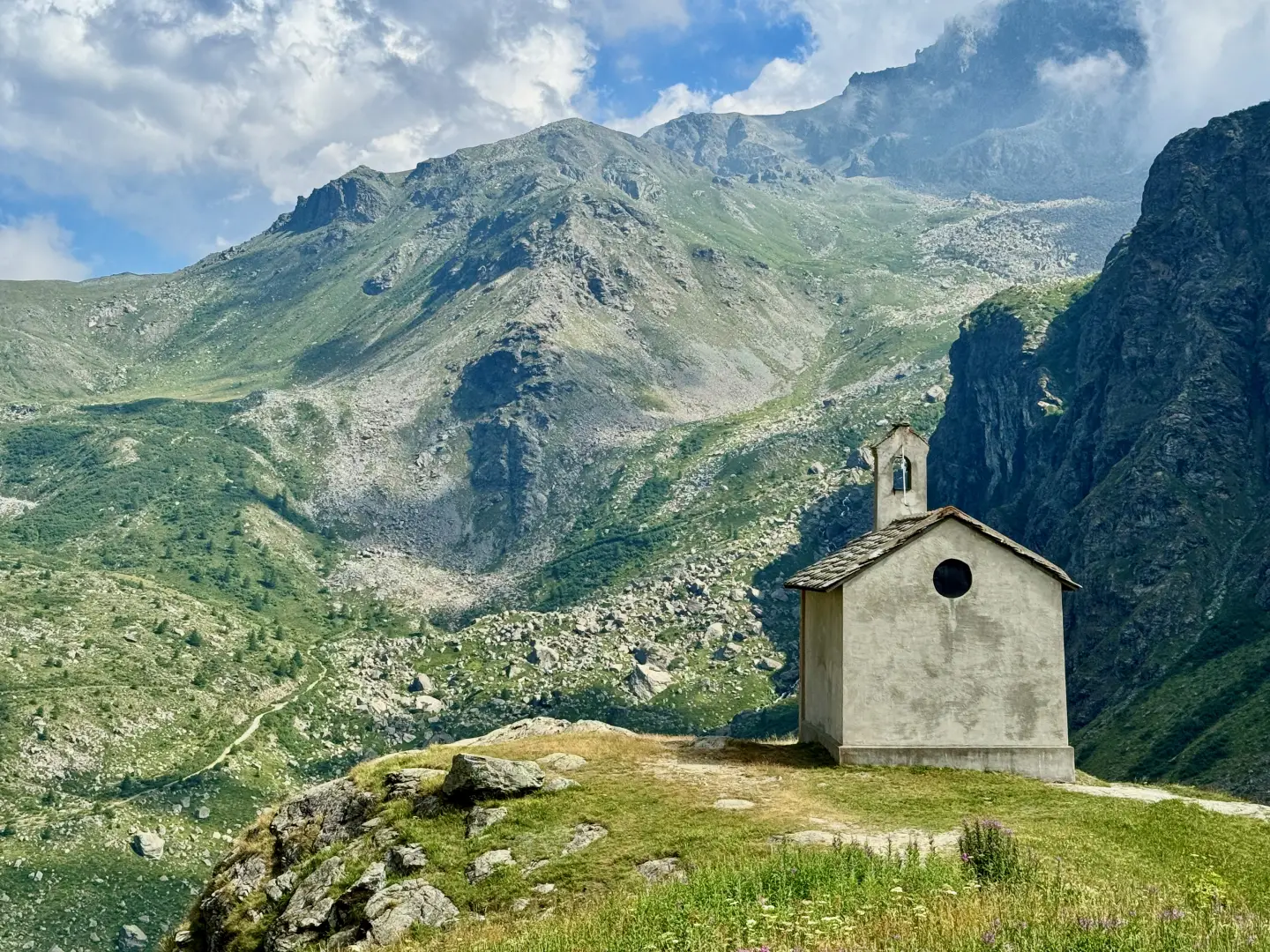Chapel of Pian del Re

Introduction
Set on a rocky spur that dominates the wide plain of Pian del Re, right where the Po rises from the veins of Monviso, the Chapel of the Madonna della Neve stands out solitary amidst the mists and high-altitude meadows. Built at the end of the 19th century thanks to the will of the local community and a parish priest with a passion for the mountains, the chapel unites Marian devotion and Alpine spirit in a place that invites meditation and contemplation. Dedicated to Our Lady of the Snow, a Marian figure associated with purity and protection in impervious environments, the chapel has been a symbolic reference point for hikers, mountaineers and valley dwellers for over a century. In the past, summer masses and commemorations were celebrated there, now discontinued but still alive in the collective memory.
Description
Situated at an altitude of 2020 metres, in the heart of the Monviso Park, the chapel is isolated from the other buildings present in Pian del Re (including some former military barracks), on a small rocky relief that offers a panoramic view of the source of the Po and the entrance to the Vallone delle Giargiatte. The initial idea, born in July 1892 during a mass celebrated on the summit of Monviso by Don Giacomo Lantermino, was to erect a place of worship directly on the summit of the mountain. Logistical difficulties, however, forced a rethink, and the funds raised were eventually allocated to the construction of a more accessible chapel. Thus, in 1899, the Chapel of Our Lady of the Snows in Pian del Re was built. The chapel, designed by engineer Giuseppe Gastaldi and built by Piedmontese craftsmen, presents a simple architecture, faithful to Alpine tradition. It is rectangular in shape, with the entrance facing east and the presbytery to the west. The walls are of local stone bonded with lime, the pitched roof is of slate and the interior has a wooden plank floor. The altar, the only stable liturgical element, is made of decorated wood. The main façade features a circular rose window that lets in the morning light, framed by neo-Gothic pictorial decoration. The interior, also painted with mock architectural motifs, preserves the original fresco of the Madonna and Child above the altar, the work of Giuseppe Catei of Turin.